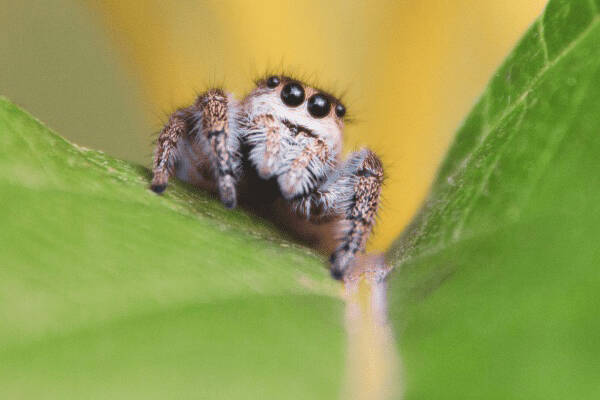Grizzlies, cougars and moose may rule the wilds of British Columbia, but are they the greatest threat to travellers along the west coast? What other creatures lurk in the shadows, and what can visitors do to protect themselves?
Let’s be honest: from the smallest spider to the biggest bison, most of BC’s wildlife would rather avoid all humanity than attack you during your vacation. But yes, technically there are poisonous spiders in BC, and here’s what you need to know.
Poisonous spiders in BC
First off, let’s get our terms straight. ‘Poisonous’ generally refers to things a human has eaten, while ‘venomous’ refers to an injected toxin – like you’d get from a snake or spider bite. Venom is what spiders use to subdue their prey, so almost all spiders are venomous.
The good news is that most of that venom is not dangerously harmful to humans.
Like mosquito bites and bee stings, every human reacts differently, but a bite from most BC spiders is unlikely to send you to the hospital. The only one with venom that’s dangerously harmful to humans is the Western Black Widow (Latrodectus hesperus).
“A bite from a Western Black Widow does require medical attention. But that doesn’t mean we need to fear this spider — the incidence of people being bitten by it, or any other spider, is extremely low. Even though it lives in populated regions such as along the east coast of Vancouver Island and the Thompson-Okanagan, most people have never seen one. It is a shy species whose first reaction is to hide when threatened,” says Claudia Copley, Entomology Collection Manager at the Royal BC Museum.
Other common British Columbia spiders
With their fuzzy legs and prominent eyes, wolf spiders can look frightening, but there’s no reason to fear their venom. Copley says they’re remarkably fast runners, and will scurry far away before you’ve even thought about getting bitten. Orb weavers are another common variety – look for them in your garden or spinning a gorgeous web near your porch light. Hobo spiders are considered medically benign, and weave intricate funnel shaped webs to trap prey.
Want to learn more about big spiders in BC? Copley says the largest spiders in BC are Giant House Spiders (Eratigena duellica) which can grow to be 10 centimetres, legs included. Giant House Spiders are one of many spider species that’s been introduced to BC from elsewhere, and typically lives where people live.
British Columbia is also home to a number of jumping spider species. These tiny creatures do leap like leopards to attack their prey, but don’t panic – spiders may be carnivores, but they’re not interested in you.
“Spiders are important predators of insects and other arthropods in our homes, gardens, agricultural areas, and wild places. So instead of feeling fearful, appreciate them for their role in controlling pests,” Copley says.
Since 2006, a team of researchers from the Royal BC Museum has been conducting field surveys and regularly documenting the full diversity of the province’s spider population. Read more about the BC Spider Checklist here! To date, there are 903 recorded species of spider in British Columbia, but that number may continue to grow as the research continues.
Occasionally new spiders are introduced to the province, typically arriving on planes and ships. But many of the spiders identified through the Royal BC Museum Spider Checklist have lived here a long time – they’ve just never been identified and catalogued.
READ MORE: Rare spider sneaks out of hiding in Langford
What do spiders need to survive?
Now that you know spiders in BC aren’t dangerously harmful to humans (and even help control pest populations), what can you do to help our arachnid friends?
Conserving habitat is essential to the survival of any species, so leaving spiders alone is a good first step. But even spiders living in conservation areas far from humans are being negatively affected by our actions, thanks to catastrophic climate changes.
Copley points to spider species that live high in the alpine because they need a cold ecosystem in order to survive. As temperatures in British Columbia warm, these spiders have nowhere to go – they can’t climb any higher on the mountain. As conditions change across the province and around the globe, some spider species will lose even more valuable habitat. So what can we do to help them?
“Make conscious choices in terms of climate chaos. Make choices that will help preserve habitat that’s already being protected.”
Explore the peer-reviewed Spider Checklist at Checklist of the spiders (Araneae) of British Columbia.
Want to learn more about spiders and other creatures?
- Victoria Bug Zoo, Victoria
- Beaty Biodiversity Museum, Vancouver
- Royal BC Museum, Victoria
Plan your adventures throughout the West Coast at westcoasttraveller.com and follow us on Facebook and Instagram @thewestcoasttraveller. And for the top West Coast Travel stories of the week delivered right to your inbox, sign up for our weekly Armchair Traveller newsletter!











 Sylvan Lake Disc Golf Course welcomes peak season with weekly events
Sylvan Lake Disc Golf Course welcomes peak season with weekly events